
.jpg)
The opening ceremony of SAHZU Boao Campus, also called SAHZU Cardio- and Cerebro-vascular Hospital, is launched on June 26, 2022.
The healthcare services provided at Boao range from pre-hospital care, emergency services, outpatient consultation to inpatient care. The campus features one-stop multidisciplinary treatment for cardio- and cerebro-vascular diseases, integrated early rehabilitation and a health record-oriented holistic management of metabolic diseases.

Starting from December 6, 2021, the nationally renowned SAHZU Eye Center will have a new address at No. 1 Xihu Avenue.
The SAHZU Eye Center is a modern ophthalmic center integrating healthcare, education and research, in line with international standards. The newly opened SAHZU Eye Hospital Campus is considered as the largest of its kind in China with a building area of nearly 50,000 square meters, 150 outpatient consultation rooms, 80 examination rooms, 28 operation rooms and 200 licensed beds.
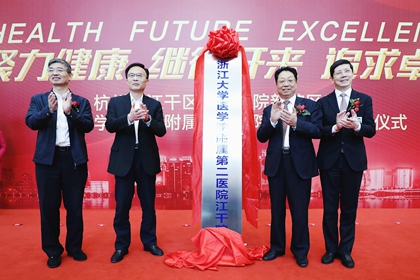
Chengdong Campus was opened on October 30, 2020. The campus is located at the east of Hangzhou, right next to the transportation hub of Hangzhou East Station, covering a land of 112,500 square meters with 600 licensed beds. It is a state-owned, public, and non-for-profit hospital.

SAHZU and Xiaoshan District Government reached an agreement to set up its third campus in Xiaoshan District, Hangzhou.
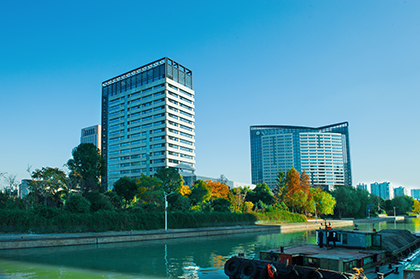
The Binjiang Campus was put into operation with a capacity of 1200 beds.
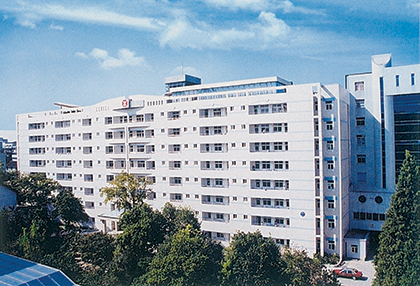
3 more hospital buildings of a total floor area of 65,400 m2 were set up for outpatient consultation, patient admission, medical education, and scientific research.

The Hospital was merged into Zhejiang University system and renamed as the Second Affiliated Hospital Zhejiang University School of Medicine (SAHZU).
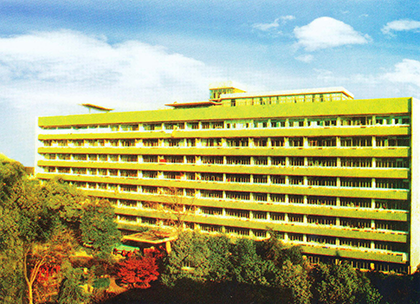
An outpatient building of 3,680 m2 floor area (which was later expanded to 12340 m2) and an inpatient building of 15,300 m2 floor area and 600 beds were established.

The People's Government of Zhejiang Province took over the hospital officially and renamed it as the Second Affiliated Hospital Zhejiang Medical College. By then, the hospital then had General Surgery, Thoracic Surgery, Neurosurgery, Orthopedics, Surgical Oncology, Urology, Anal Surgery, Oral Surgery and Dermatology with 206 beds and 216 staff, serving for 60,000 outpatient visits and 2,500 inpatients annually.

During the Anti-Japanese War, Guangji Hospital helped thousands of the wounded. It was once occupied by Japan and renamed as Tongren Hospital. After the war, the hospital was taken over again by the Church Missionary Society until the early days of PRC.
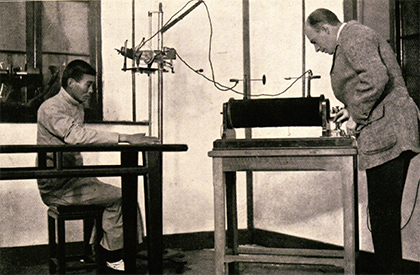
With the blossom of the second industrial revolution, Guangji Hospital was equipped with power generators, water tower, X-ray machine and other modern equipment. At the same time, Song Mu Chang Branch was established for phthisis patients.

A medical school affiliated to the hospital, the Guangji Medical School, was established as one of the earliest medical education institutions in China. Since founded, it had cultivated a great number of medical and nursing talents who also contributed to the hospital's development or provided their services across the country.
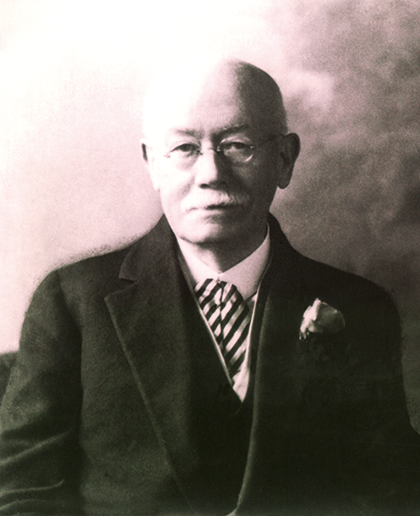
Dr. David Duncan Main, a British physician, presided the hospital. He dedicated his life to serving people in distress. Under his leadership, the hospital became one of the best healthcare facilities in Far East at that time. Through all the years, Dr. Main's spirit of innovation has been faithfully practiced as the hospital continues to open new chapters.

An opium rehabilitation center managed by Dr. Meadows, a missionary doctor from the British Church Missionary Society, opened in Hangzhou. Several years later, the center became a general hospital named Guangji Hospital, meaning universal benevolence.